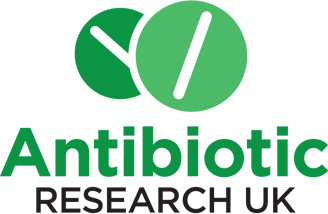Myths about antibiotic resistance
Bacteria, antibiotics and antibiotic resistance are complicated topics. But, there are a few common myths about antibiotic resistance we’re working hard to bust. Check out these common misunderstandings and become more antibiotic aware.

Myth #1
It’s the body that becomes resistant to antibiotics
Not true. It’s not you, but the bacteria within your body that become resistant to antibiotics. Bacteria can even pass this resistance on to each other. As antibiotics are used to kill bacterial cells, your body does not need to be ‘non resistant’ in order for them to work. However, there are many bacteria that live on and in your body at all times, most of which are not harmful at all; that could be where this myth comes from.
Myth #2
I have never taken antibiotics so I cannot get a resistant infection
While having taken antibiotics in the past does increase your risk of getting an antibiotic-resistant infection, it is still possible for someone who has never taken antibiotics to get one too.
Around 10% of us carry resistant bacteria in our bodies. These resistant strains of bacteria can arise in a number of ways including spontaneously, through transmission from person to person, and through picking them up during a trip to the hospital – even if you are just visiting a patient.
Myth #3
Superbugs are a good thing
‘Bugs’ is a simple term used to describe bacteria; superbugs is a term often used to describe resistant bacteria. They are certainly not super as in ‘super good’; quite the opposite – they are super bad. They are particularly dangerous as they are resistant to antibiotics, which means that the drugs we usually use to get rid of them are not effective.
Myth #4
Microbial resistance, antimicrobial resistance and antibiotic resistance are the same thing
This is where it gets a little tricky, as the terms describe the same phenomenon, but in different ways. Bacteria are microbes (and so are fungi, protozoa and viruses) – therefore, microbial resistance covers resistance in any of these microorganisms. For bacteria, the term is used to describe the way in which some bacteria are able to resist the killing effects of antibiotics. It is talking about the resistance shown by the microbes.
Antimicrobials, however, include antibiotics. They are things that kill microbes or prevent microbes from growing. Therefore, antimicrobial resistance is resistance to the use of antimicrobial treatments.
Other treatments that wipe out different types of microbe (such as parasites etc.) are also included here. So, it is a broader term than antibiotic resistance, which only applies to bacteria and their resistance to antibiotic treatments.
All clear? Simply put, microbial resistance is a characteristic shown by microbes including bacteria. Antimicrobial resistance is the phenomenon of microbes being resistant to treatments. Antibiotic resistance is specific to the resistance to antibiotics that some bacteria show.
Myth #5
Antibiotics treat all types of infection
Antibiotics are only suitable for treating bacterial infections. Other infections, such as those caused by viruses or fungi, will not respond to treatment with antibiotics. This is why your GP will not prescribe antibiotics for most coughs and colds, the flu, athletes foot, thrush or a range of other infections.
Myth #6
If one antibiotic doesn’t work, there will be another one that does
Unfortunately, there are a growing number of multidrug-resistant strains of bacteria that are resistant to many antibiotics. In some cases, there is no treatment at all. New treatments that could provide an alternative to antibiotics are in development, but creating new drugs takes many years and millions – often billions – of pounds. Many new drugs will not make it through the safety and efficacy trials required to ensure it is safe. That’s why we’re working on antibiotic resistance breakers right now.
Myth #7
Pharmaceutical companies are prioritising the development of new antibiotics
Pharmaceutical companies create new drugs at great expense, and then recoup the money through sales of the drugs. While this model works well for treatments for common conditions such as cancer, diabetes, chronic pain and asthma, it is not effective when it comes to antibiotics.
If a pharmaceutical company invests in creating a new antibiotic against resistant bacteria, it should only be used for treating patients with resistant infections. This means that for the new antibiotic, most of the time it would be sitting on the pharmacy shelf – frequent use would mean that resistance would very quickly appear. However, pharmaceutical companies need high volume/high-value sales to make a return for their shareholders. This cannot happen with new antibiotics as the course of treatment is short and patient numbers treated are relatively small (thousands not millions). Additionally, governments keep the price of antibiotics low as they are such vital treatments, further disincentivizing pharmaceutical companies from developing new ones.
Myth #8
More antibiotics are used in agriculture than in healthcare in the UK
Up-to-date figures vary between sources, but livestock only accounted for 33% of antibiotic sales in the UK in 2016. Companion animals accounted for 8%, and the remaining 59% were sold for use in healthcare settings.
While the UK has stricter rules than many other countries regarding the use of antibiotics in farming, this is still a potential source of antibiotic resistance and evidence suggests that antibiotics and resistant bacteria can contaminate the local environment.
There is also concern that Brexit will allow the UK more freedom to increase the use of antibiotics in farm animals over and above current EU standards.
